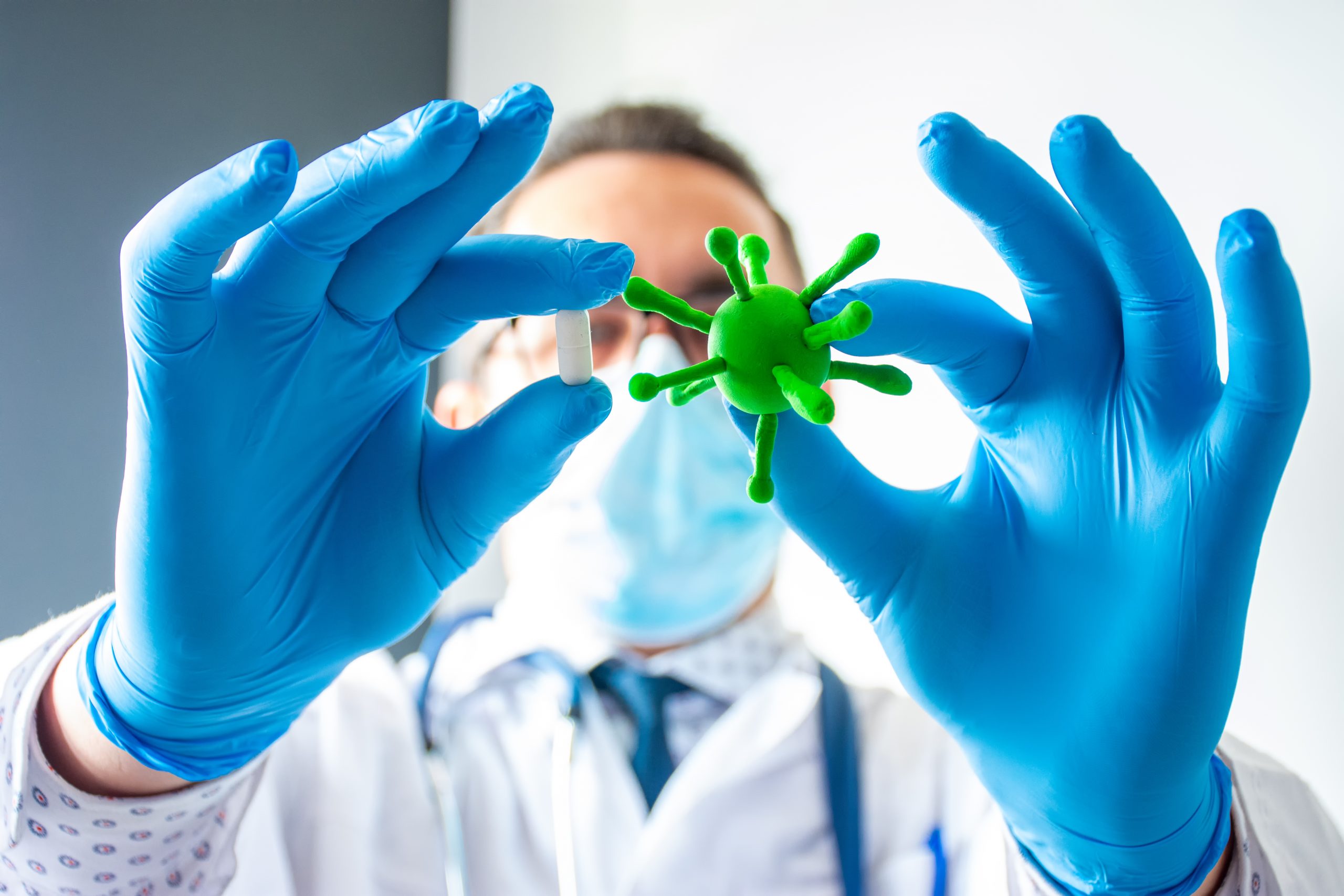“The Ridgeback Biotherapeutics and Emory collaboration illustrates exactly why the Bayh-Dole model has worked so effectively in a free market system: it allows different actors to specialize in the areas at which they will be most productive, while creating a mechanism for the injection of private capital and private sector assumption of risk.”
 Entering month eight of the global pandemic, it has become increasingly clear that unprecedented scientific advances will be needed to overcome COVID-19. Never before in history have the eyes of global consumers so closely watched vaccines and therapeutics in the pipeline, in the hopes that the biopharmaceutical industry’s rapid response to coronavirus will lead the way to a new-better-normal.
Entering month eight of the global pandemic, it has become increasingly clear that unprecedented scientific advances will be needed to overcome COVID-19. Never before in history have the eyes of global consumers so closely watched vaccines and therapeutics in the pipeline, in the hopes that the biopharmaceutical industry’s rapid response to coronavirus will lead the way to a new-better-normal.
In the United States alone, over 860 clinical trials for COVID-19 related therapeutics and vaccines are taking place across all 50 states. Since March, the scientific community has taken 47 vaccine candidates from early-stage research to clinical evaluation, with 10 candidates in late-stage clinical trials. Equally promising, another 155 candidates are currently undergoing pre-clinical evaluation.
While the United States has played a critical role in driving research into innovative treatments and vaccines for COVID-19, America hasn’t always been a global leader in life sciences development.
Looking Back
According to a recent study by the Information Innovation & Technology Foundation, in the 1980s, less than 10% of new drugs were introduced first in the United States. And in the 1990s, global biopharmaceutical firms spent 50% more in R&D in Europe than in the United States.
However, thanks to a series of laws passed in the 1980s and 1990s, all that began to change. The Bayh-Dole Act was chief among the legislation that stimulated America’s leadership in life sciences innovation. Passed in 1980, the Act allowed universities to retain the intellectual property (IP) rights for innovations developed with federal funding. The IP can then be licensed to the private sector to test, manufacture, and commercialize the innovations derived from that research. By creating a mechanism for the universities to receive royalties, the legislation generated an incentive for universities to move research from the lab to the marketplace.
The Act was born from a recognition that, too often, federally funded university research sat on the shelf, depriving consumers of the many benefits those innovations might hold. In the late 1970s, less 5% of the government’s 30,000 patents had been licensed to private sector. Following Bayh-Dole’s enactment, there was a tenfold increase in patents granted to universities, in turn leading to the creation of 2,200 companies. Over the last 25 years, over 80,000 patents have been issued to research institutions.
The legislation also helped drive investment into the research and development of new treatments and cures in the United States. While Europe previously attracted greater pharmaceutical investment, by 2006, companies invested 40% more in the United States than in Europe. That investment helped spur earlier access to the newest innovative medicines for American patients: by 2010, more than 60% of new drugs were first introduced in the United States.
What’s more, collaboration between public research institutions and the private sector produced more than 200 drugs and vaccines since 1980. Today, as the global scientific community races to develop therapeutics and vaccines to combat COVID-19, we continue to see real-time examples of Bayh-Dole in action.
Bayh-Dole Continues to Pay Off Today
For example, in March, Ridgeback Biotherapeutics announced a collaboration with Drug Innovation Ventures at Emory University (DRIVE) to develop an oral treatment to combat COVID-19. Under the agreement, Ridgeback licensed a technology developed by DRIVE, EIDD-2801, to prevent the replication of coronavirus strains.
Upon announcement of the collaboration, the CEO of DRIVE shed light on why public-private partnerships are so critical during the global pandemic. George Painter, the CEO of Drive, noted:
“We immediately recognized that EIDD-2801 had the potential for treating COVID-19… Given Ridgeback Biotherapeutics’ experience in accelerating the development of potential therapeutics in outbreak settings and its proven commitment to global health, we are confident that Ridgeback can quickly advance EIDD-2801 into clinical trials for COVID-19 and initiate steps toward ensuring a rapid development path for this promising drug.”
The Ridgeback Biotherapeutics and Emory collaboration illustrates exactly why the Bayh-Dole model has worked so effectively in a free market system: it allows different actors to specialize in the areas at which they will be most productive, while creating a mechanism for the injection of private capital and private sector assumption of risk.
As the Information Technology & Innovation Foundation notes, federally-funded public sector research institutions specialize in the early stage research into the basic science of a disease. Meanwhile, in the private sector, “the preponderance of its activity is applied R&D focused on the discovery, synthesis, testing, and manufacturing of candidate compounds intended to exploit biologic targets, for the purpose of curing medical conditions.” By creating a mechanism to license the research conducted at universities to private sector entities, the Bayh-Dole legislation enabled all actors involved to capitalize on their areas of specialization. This ultimately makes the research more effective and translates into new, innovative treatments for patients.
Innovation Policy Matters
When celebrations of the 40th anniversary of Bayh-Dole legislation began earlier this year, no one could have anticipated that the Act would become more important than ever in 2020. One factor – among many – that the pandemic has crystallized is this: when it comes to driving life sciences, innovation policy matters.
To ensure that the United States continues to be a global leader in life sciences innovation, the government must continue to recognize and celebrate the role policy plays in supporting biopharmaceutical innovation in order to lead the global community beyond COVID-19 once and for all.

![[IPWatchdog Logo]](https://ipwatchdog.com/wp-content/themes/IPWatchdog%20-%202023/assets/images/temp/logo-small@2x.png)

![[Advertisement]](https://ipwatchdog.com/wp-content/uploads/2024/04/Artificial-Intelligence-2024-REPLAY-sidebar-700x500-corrected.jpg)
![[Advertisement]](https://ipwatchdog.com/wp-content/uploads/2024/04/UnitedLex-May-2-2024-sidebar-700x500-1.jpg)
![[Advertisement]](https://ipwatchdog.com/wp-content/uploads/2024/04/Patent-Litigation-Masters-2024-sidebar-700x500-1.jpg)

![[Advertisement]](https://ipwatchdog.com/wp-content/uploads/2021/12/WEBINAR-336-x-280-px.png)
![[Advertisement]](https://ipwatchdog.com/wp-content/uploads/2021/12/2021-Patent-Practice-on-Demand-recorded-Feb-2021-336-x-280.jpg)
![[Advertisement]](https://ipwatchdog.com/wp-content/uploads/2021/12/Ad-4-The-Invent-Patent-System™.png)






Join the Discussion
One comment so far.
Landmark Recovery Louisville Kentucky
November 11, 2020 04:13 amThe innovation policies are playing a very important role as the healthcare facilities need to be changed. Whether it is about the field of normal healthcare, special facilities or recovery centers etc. Thank you very much. Keep sharing this!
Landmark Recovery Louisville Kentucky